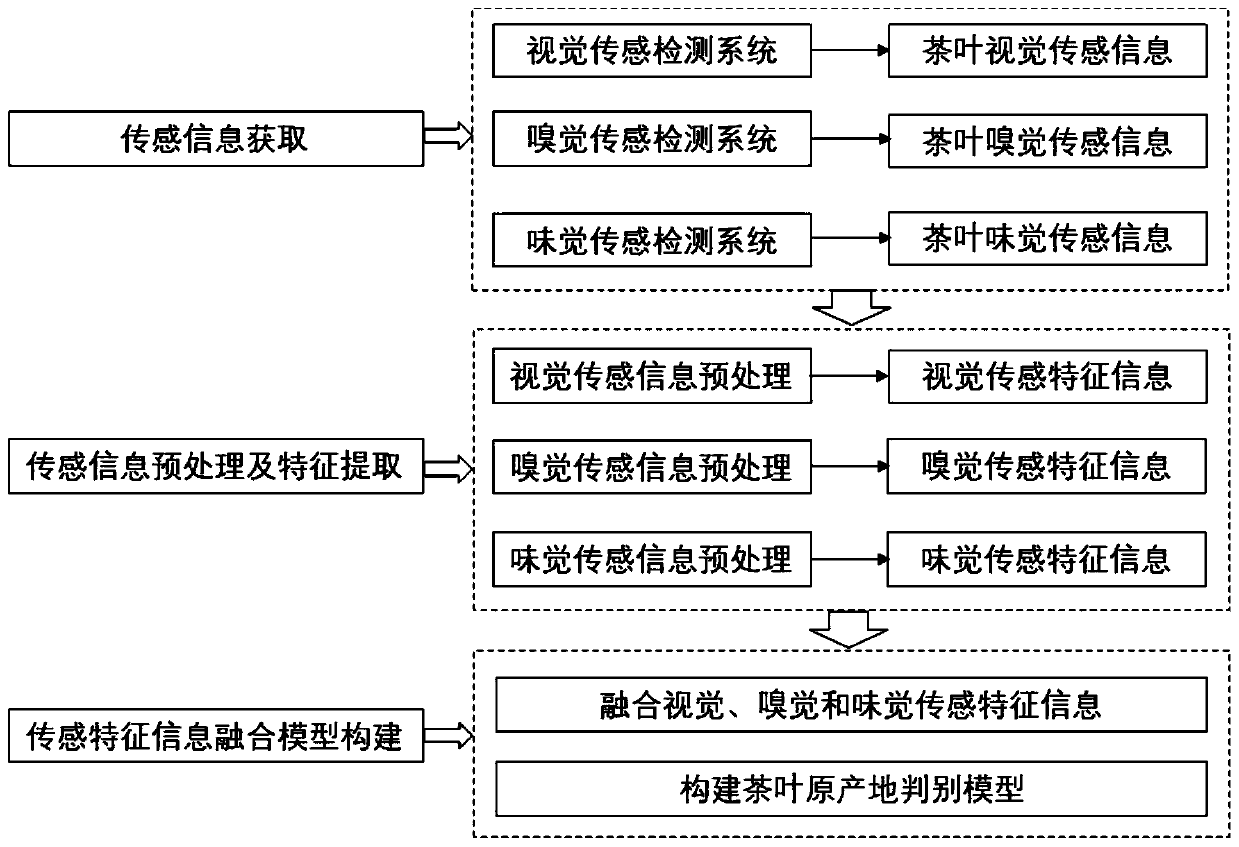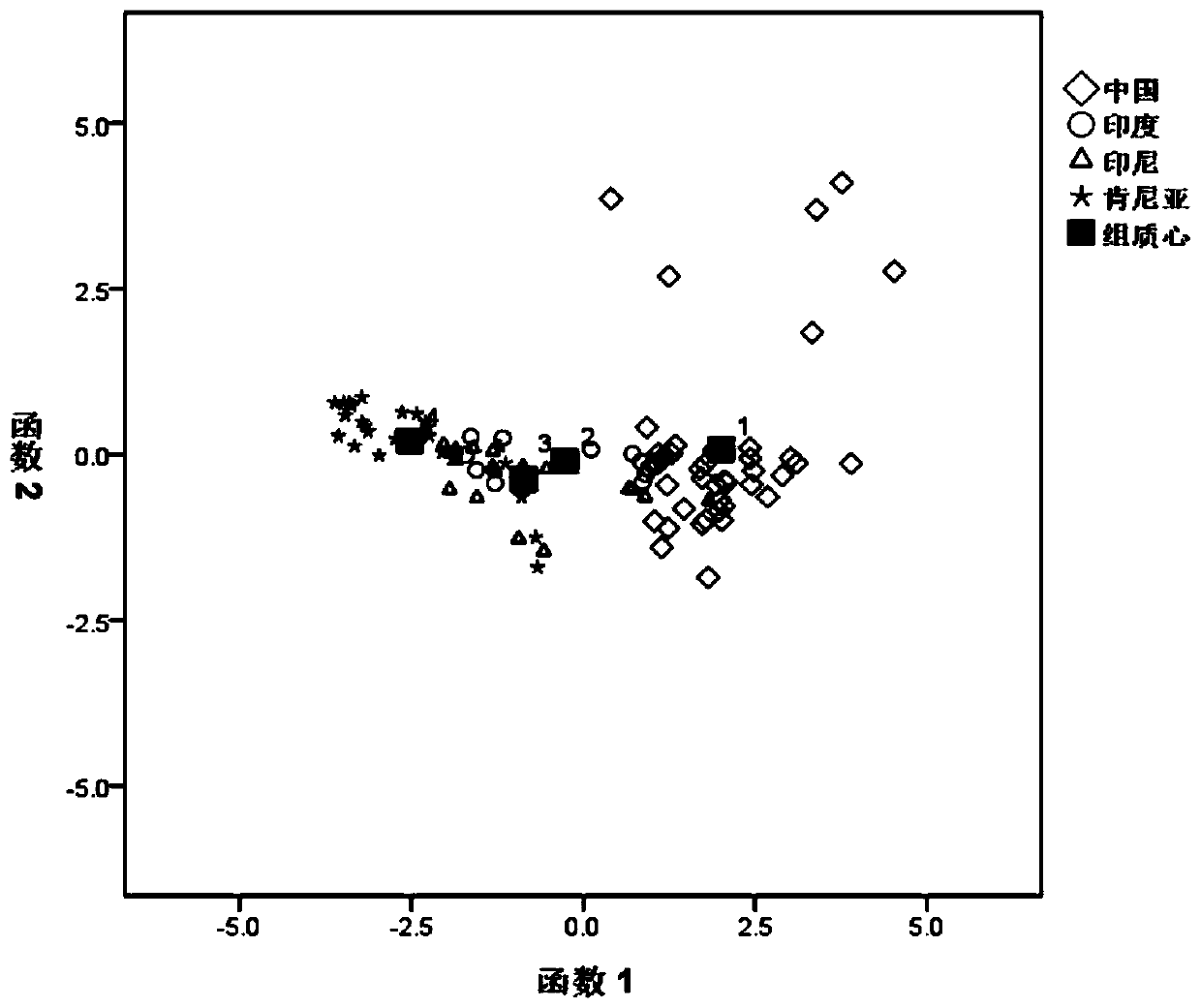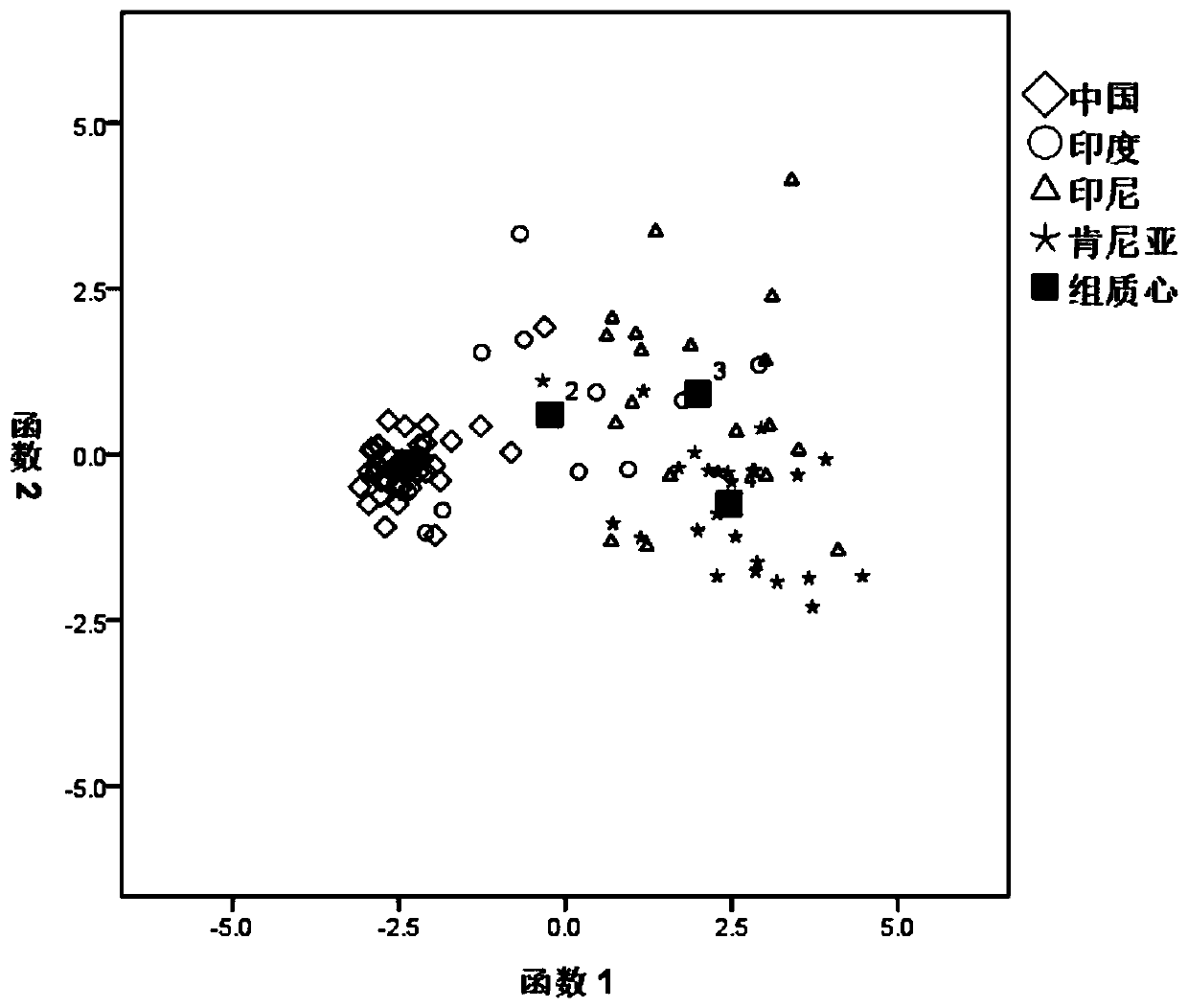Method for judging origin of tea based on visual, olfactory and taste sensing information fusion
A technology of sensing information and discrimination methods, which is applied in the direction of testing food, testing beverages, material inspection products, etc., can solve the problem of not being able to fully describe the overall information of the sensory quality of black tea, and achieve the effect of improving accuracy and overcoming limitations
- Summary
- Abstract
- Description
- Claims
- Application Information
AI Technical Summary
Problems solved by technology
Method used
Image
Examples
Embodiment
[0033] (1) Select tea samples and take black tea as the experimental object: collect black tea samples from four different countries including China, India, Indonesia and Kenya, a total of 96 samples, including 41 samples from China, 11 samples from India, and 19 samples from Indonesia , 25 samples from Kenya;
[0034] (2) Sample preparation: take 3 equal portions of 1g dry tea for each tea sample, and use the visual, olfactory and taste sensing systems to obtain the color, aroma and taste information of the tea;
[0035] (3) Visual sensor information collection: Take 1g of black tea sample (dry tea), brew it with 50mL boiling water, cover and seal it for 5 minutes, and filter to obtain tea soup; take the cooled tea soup and place it in a cuvette with an optical path of 10mm for testing , the integration time is set to 1500us, the spectrum is smoothed 3 times, and each spectrum is collected 3 times for averaging. The spectral range of the spectrometer is 200-1100nm, with a tot...
PUM
 Login to view more
Login to view more Abstract
Description
Claims
Application Information
 Login to view more
Login to view more - R&D Engineer
- R&D Manager
- IP Professional
- Industry Leading Data Capabilities
- Powerful AI technology
- Patent DNA Extraction
Browse by: Latest US Patents, China's latest patents, Technical Efficacy Thesaurus, Application Domain, Technology Topic.
© 2024 PatSnap. All rights reserved.Legal|Privacy policy|Modern Slavery Act Transparency Statement|Sitemap



